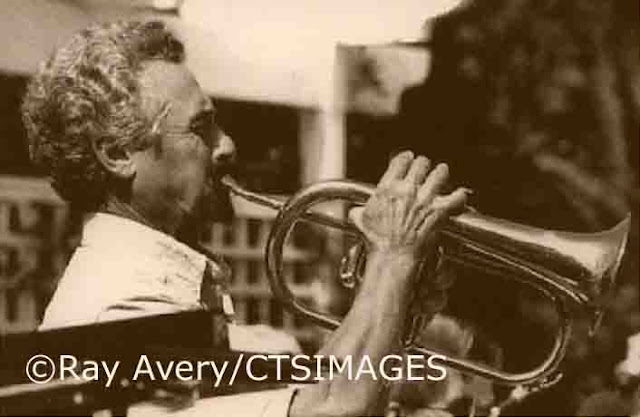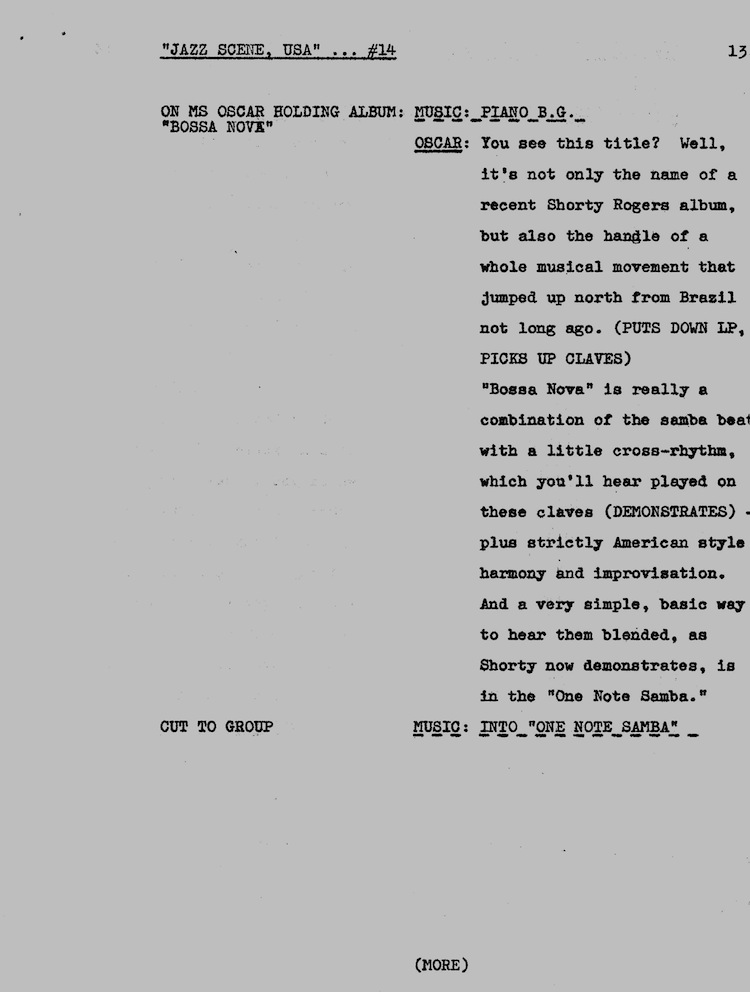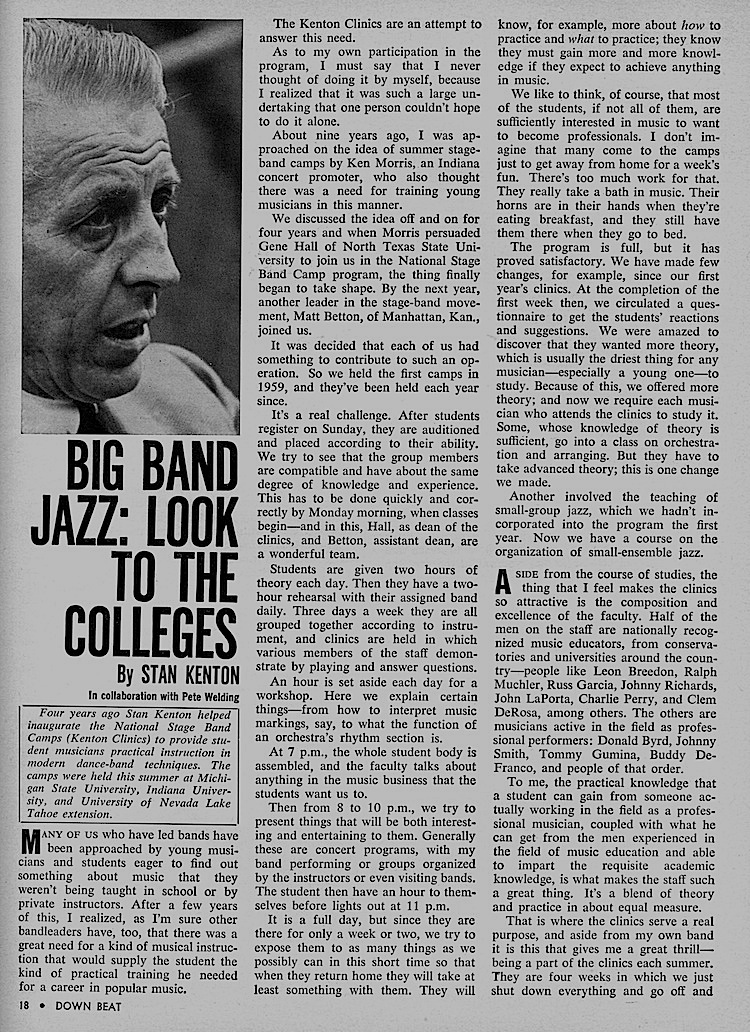JAZZ SCENE U.S.A. #15
CAL TJADER QUINTET
I am in the process of moving my work on this platform to a new home that unites all of my jazz research under one roof. Thank you for looking at my work here at google blogger. I think you will find the new home more user friendly with links and tags to all of my research. This link will take you to this research at the new site where I have updated the links to Jazz Scene USA segments on YouTube.
MONDAY, OCTOBER 15, 1962
CBS TELEVISION CITY, LOS ANGELES, CA
Commentary © James A. Harrod, Copyright Protected; All Rights Reserved
Cal Tjader appeared with his current quintet on the 15th program taped for Steve Allen’s JAZZ SCENE USA series. As noted on the production script, the group performed as a quartet doing straight ahead jazz numbers and was joined by the conga player for tunes with a Latin beat making it a quintet. Tjader’s quintet for the show included: Cal Tjader, vibes; Lonnie Hewitt, piano; Freddie Schrieber, bass; John Rae, drums and Bill Fitch, conga.
Cal Tjader began his jazz career as the drummer in Dave Brubeck’s Trio with two releases on the Coronet label. The Trio would release three 10” LPs on the Fantasy label and during the course of Tjader’s association with the Dave Brubeck Trio he demonstrated his adept facility on bongos and the vibes as recalled in the Dave Brubeck interview that follows:
Ted Panken Interview with Dave Brubeck, July 23, 2007
For instance, Ellington wrote with the voices of his musicians in mind. Were you writing with Paul Desmond’s voice in mind? Or was Desmond or anyone you’re playing with supposed to play your vision? How did it work?
Well, with Cal Tjader, he started playing vibes with my trio. I didn’t even know he could play vibes. As soon as he started playing vibes, then Armando Peraza was stranded because Slim Gaillard abandoned him after bringing him from Cuba, and he was working this club in San Francisco where we were playing. The owner said, “I keep him here because Slim has just left him, and I feed him and let him sleep here in the club,” and he swept up and did odd jobs. He said, “He’s a helluva bongo player; why don’t you let him sit in with you.” So I did it, just because the guy was abandoned. And boy, he broke the place up. So Cal started playing bongos because of that, and Paul bought a pair of bongos. So we had three guys up there on the stage playing bongos.
But Peraza knew what he was doing.
Oh, yeah. Then Cal became so intrigued with it, and then he became a big star in Caribbean music. But I’m not answering your question. Things happen, and you move. Like, I didn’t know he could play vibes. I didn’t know he would be a great bongo player. You just use where somebody is great, and you incorporate it into things. With the trio, it was easier to answer that question. The quartet was the trio with Paul Desmond playing solos on the same arrangements. That’s the way it had to start, because we didn’t have time to organize or rehearse. We just had a job, and I thought it was well enough to play. I was so bad off that they had to go into a blackout so I could stand. I had to pull myself up on the piano bench and just stand there for a while. I shouldn’t have been playing, but I had to play. There was no way out. But with Paul, I started thinking in terms more of counterpoint, because he and I naturally played counterpoint together. So what does somebody bring into the group?
When Cal Tjader exited the Dave Brubeck Trio he recorded a few sessions for the Weiss brother’s Galaxy label before spending some time with the George Shearing group that also included Armando Peraza. The Galaxy sessions included John Marabuto on piano and Jack Weeks on bass. Weeks had played bass on the Dave Brubeck Octet sessions that included Cal Tjader on drums. Vince Guaraldi replaced Marabuto on some of the Galaxy sessions and would team up with Tjader later on some of the Tjader jazz sessions for Fantasy. Tjader’s solo album for Savoy, CAL TJADER-VIBIST (MG 9036), included a combo with Armando Peraza who would continue to appear on several recordings that Cal Tjader cut for Fantasy Records as he fine tuned his Latin groups.
Oscar Brown, Jr. featured Tjader’s recent Verve album celebrating the music of Mexico and Brazil and pointed out the influence that the music from Marcel Camus’ BLACK ORPHEUS by Antônio Carlos Jobim and Luiz Bonfá in the current Bossa Nova craze. The Tjader Quintet then performed CARNIVAL from the film.
Here is the trailer from the movie:
MARCEL CAMUS - BLACK ORPHEUS
Production credits: Host: Oscar Brown, Jr.
Executive Producer: Steve Allen
Producer: Jimmie Baker
Director: Steve Binder
Associate Producer: Penny Stewart
Associate Director: George Turpin
Technical Director: Jim Brady
Lighting Director: Leard Davis
Audio: Larry Eaton
Art Director: Robert Tyler Lee
Jazz Consultant: John Tynan
Title Films: Grant Velie
Cameras: Bob Dunn, Ed Chaney, Gorman Erickson, Pat Kenny


































































